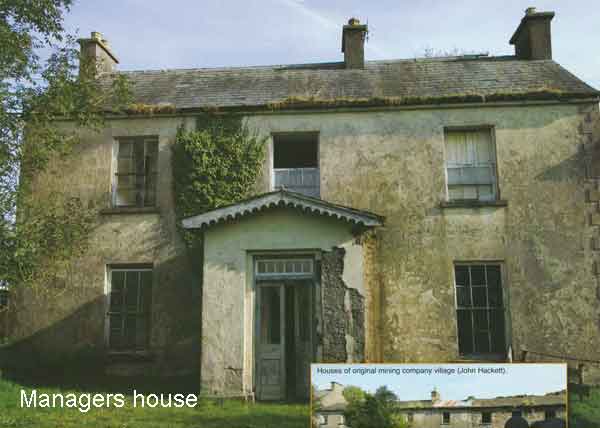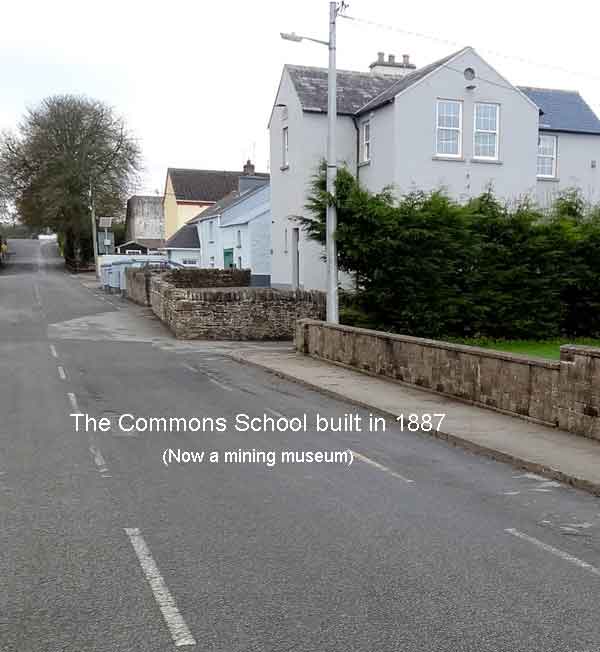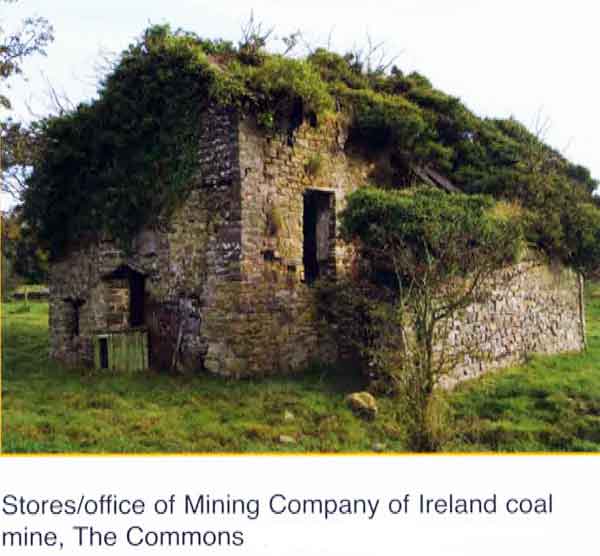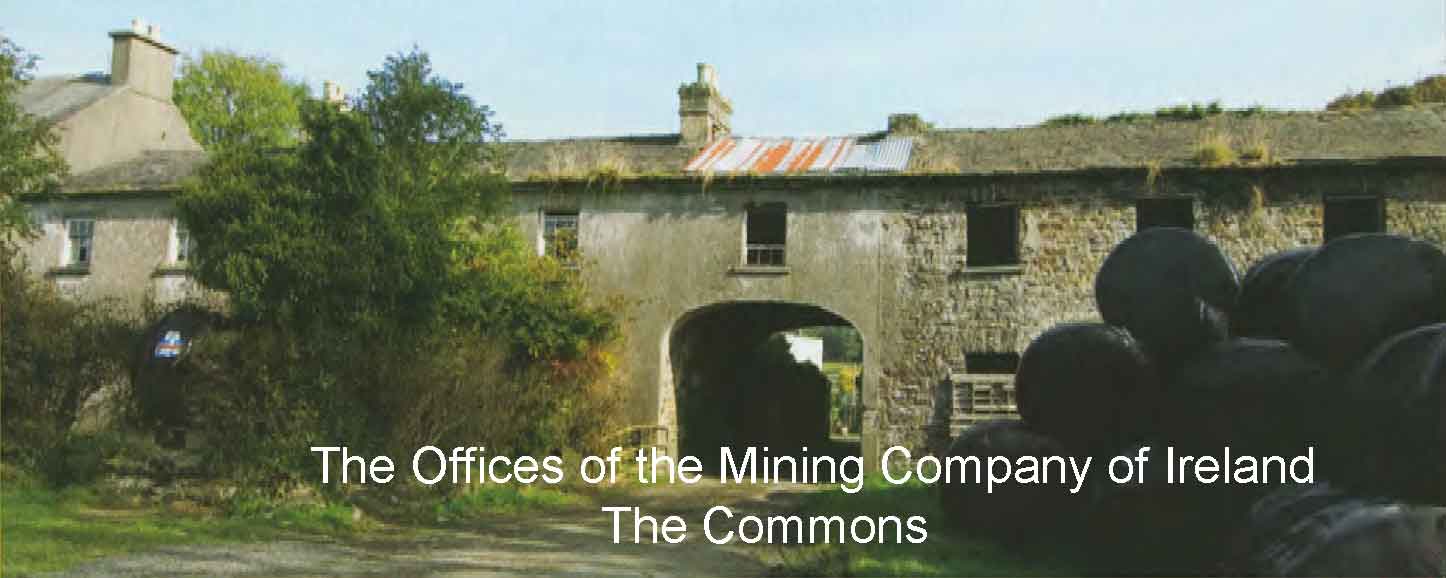The Commons
The coalfields of Slieveardagh are a continuum of the Carlow, Laois and Kilkenny coal vein. It is seldom if unique to find an industry which is passed on not only from generation to generation but spans more than three centuries. Aside from farming it has been the main source of income of the native people for close to four centuries, a feat which merits historical reference in itself.
During these bygone times the coalfields brought a measure of prosperity, employment and the promise of a secure future to many people. To the neighbouring towns of Killenaule, Thurles, Mullinahone, Callan, Urlingford and numerous other parts, the hard black anthracite, (known as ‘stone coal’ to many locals) brought work and a regular wage to thousands. Today many Irish people still associate Ballingarry with coalmining. However for the younger generation the controversy associated with the long and bitter ending of Ballingarry’s Coal Industry may unfortunately be why they recognise the name today. It’s history however makes interesting reading.
.
According to tradition, coal mining has taken place in this area for at least 1000 years. It is recorded in the civil survey of 1654 that coal was being mined which was “suitable for blacksmiths at (cúl na choille) Coolquill. Indeed local folklore suggests the Danes mined the coal opencast where a seam outcropped during their “visit” in the 9th century on Boulea Hill, A ravine extends down the side of this hill for a distance of 120 yards, A mine was opened in early 1970’s at the bottom end of this ravine from which Antracite was extracted by Ballingarry Colleries Ltd. The fields on the southern side of this Ravine are known by the local owners as as the ‘Danes fields’. Until 1825 the mines were worked almost exclusively by unlicensed private enterprise, Farmers large and small on whose land seam outcropping occurred. It is recorded that 35 mines were in production employing about 1000 men through the early part of the 1800’s.
The Famine was not so severe in this Coalmining area. Many families who had worked these Bassetts where the Coal out-cropped subsequently sold their interests to the local mining Company and emigrated to the Antracite mining area of Pennsylvania in the US.
 .The Residence of a Mine Manager in The Commons
.The Residence of a Mine Manager in The Commons
When driving through the area tall chimney like structures can be seen, these steeples were used as ventilation shafts for the larger operations, (by lighting a fire in the chimney a draught was created which pulled the impure air from the mine shaft below). These chimneys were built at Lisnamrock, Earlshill, Mardyke, Foilacamin, Newpark, Boulea and Copper. (Mardyke, Lisnamrock, Earlshill and Copper are still standing). Some of the big landowners in the area were also mineowners and when farming became less profitable they developed the mining end of their business. These included Barker of Kilcooley, who developed the mines at Newpark, Charles Langley of Coalbrook, Ambrose Going of Ballyphilip, Sir Vere Hunt of Glengoole.
In 1833 mining ceased in Mardyke, uneconomic due to the natural crushing of the seams resulting in a production ratio of 30% coal to 70% duff (culm) the Company extended its’ operation to Foilacamin and The Commons. In 1844 the Company leased the Earlshill and Ballyphilip collieries from Mr. Going. “This would place in the company’s possession the best anthracite coalfield in Ireland”. It was in the period 1850 to 1870 that many families sold their mining interests and emigrated to the Antracite Mine Fields of Pennsylvania USA.
 The Commons benefited from the development and growth of the Mining Company of Ireland. The development of the Graiguemane seam by the Mining Company and Newpark by Barker of Kilcooly created huge employment opportunities for the local population which in 1841 totaled 9,000 in Ballingarry Parish alone.
The Commons benefited from the development and growth of the Mining Company of Ireland. The development of the Graiguemane seam by the Mining Company and Newpark by Barker of Kilcooly created huge employment opportunities for the local population which in 1841 totaled 9,000 in Ballingarry Parish alone.
Five dwellings were built in the townland of Blackcommon. They were occupied by the families:- Owen Cullins, John Lamphier, Kieran Leahy, James Kelly and James McEvoy.
A Boys School was built by the Company in Kyle Lane about 1826 and lasted until the two story building was constructed in 1887. This 1887 two Storey schoolhouse is now a nmining museum and houses many artefacts associated with coalmining in Slieveardagh.
Production recorded for the years 1843 to 1853 totals 51,787 Tonnes Coal and 284,019 Tonnes duff (culm). Apart from mining and farming there were few other ways of making a living in this remote, hilly district . A decline in coal mining came around 1900 and mining almost completely ceased in 1919, apparently because explosives could not be obtained. Locals however continued to sink shafts called ‘bassets’, the landowner getting a percentage of the profit and free coal. Mr. William Young worked 1.07 acres in the Lickfinn and Glengoole South areas around this time and is recorded as recovering 3,200 tons.
In 1941 a State mining company called Mianraí Teoranta was established and, along with a number of other ventures around the country, acquired the rights to develop the Slieveardagh Coalfields under the authority of the Minister of Industry and Commerce. The Slieveardagh Coalfield Development Bill, 1941 was introduced in the Daíl and passed on April 3rd 1941. A mine was opened in Ballynonty in August of the same year employing up to 100 men. The manager was a man named Mr. McGlucky from Scotland. They also worked in Lickfinn and continued during the war years but found both projects uneconomic and they were abandoned in favour of the Copper basin in September 1948. This transition took some months as they had to move the entire operation, including buildings, machinery etc. Not long after its’ establishment, Copper Colliery was renamed Clashduff Colliery in order “to avoid confusion with the metal”! Then in January 1949 it was again renamed Ballingarry Colliery.


